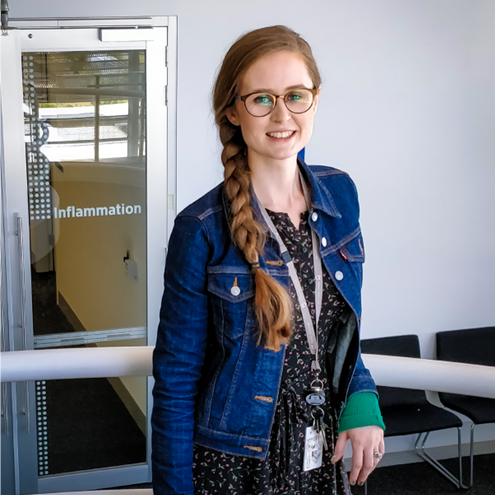Dr Hannah Coughlan
Differential analysis of three-dimensional genome architecture in the immune system
The immune system comprises a huge network of different cell types, each with a critical role in maintaining health. It is now known that immune cells possess distinct genomic architecture but what is the relationship between structure and function in immune cell types? How does the chromatin structure effect gene regulation?
High-throughput chromatin conformation capture (HiC) examines three-dimensional chromatin structure involving interactions of genes and regulatory elements or large-scale chromosome structure at a range of length scales. By measuring the frequency of long-range interactions, cell type specific chromatin structure can be identified.
I will discuss the differential analysis of HiC data to gain insight into the function of immune cells. The work utilizes the statistically robust R package diffHic to incorporate biological replicate variability in identifying significant changes in chromatin interaction frequency between immune cells under different conditions. Instead of identifying either the presence or absence of structure, diffHic uses the edgeR framework to identify strengthening and weakening chromatin structure.

Dr Hannah Coughlan
Postdoctoral Fellow, Bioinformatics Division/Immunology Division, WEHI
After completing a PhD in experimental physics at La Trobe University, Hannah changed fields into bioinformatics and joined WEHI in 2016. Hannah has a joint appointment as a senior postdoc in Professor Gordon Smyth’s lab in bioinformatics and associate Professor Rhys Allan’s lab in Immunology. Hannah’s research aims to use bioinformatic analyses reveal the form, dynamics and regulators of the intricate 3D genome architecture of mouse and human immune cells. Hannah’s work is supported by the Marian and E. H. Flack fellowship.
